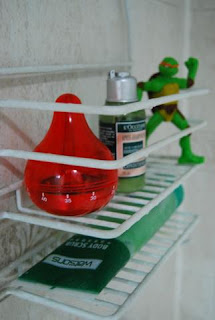
The gasping summer heat has got me thinking about irrigation. My home country, Australia, is thirsty. Its edges are crusting up and curling. People are shuffling from the crackling dry Outback to the marginally wetter shorelines, gasping for H20. Residents have to report water usage to their local council, and there’s no car-washing, garden-watering or bathtub adventures happening any more, oh no. Your home country is no doubt in a similar situation.
But what about China? In Beijing, my ayi splashes water around like a shaggy dog on a hot summer’s day. Splash a little here, slop a little there, gush a zillion gallons straight down the drain, run the dishwasher with two plates inside, wash fruit with the tap merrily gushing – no worries. And our family isn’t much better. There’s plenty of deep sea adventures in our overfilled bathtub, complete with super-soakers to saturate the shower curtain. Our plants are thriving, drowning even. Our kids love to fill huge vats to splash dollies in, before Ayi tips it all down the drain. We have waterpark-festation in our house.
And it has to stop. Shame on us.
While Australia struggles to hydrate itself with a population of 21 million (about the size of Shanghai), goodness knows how China supplies enough water to keep its massive population moist. Or does it? In February 2007, China’s Ministry of Water Resources released a five-year water-saving plan to counteract China’s severe decline in water resources. With 20 percent of the world’s population and only 7 percent of global water resources, China has it tough, and things could rapidly become dire. Roughly 400 cities now experience water shortages and 110 face severe shortages. Yet here I am taking 20-minute showers and using the full-flush button on the toilet for wee-wee. Shame on me.
According to Xinhua News, Beijing’s annual demand for water is a gob-smacking 4 billion cubic meters. Seeing as though we seem to use half that amount in our apartment, I’ve had a long-overdue rethink. Things are changing. We are drying up. No more running taps, deep-sea baths or raging rapids down our indoor play slide. Washing machines will be full, ditto dishwashers, and our little vigilante egg timer will perch itself firmly in our shower – tick tick tick. And it already seems to be working. My seven-year-old daughter is now reminding me to turn off the tap when brushing my teeth.
What is your family doing to save China’s water resources? If you’ve been as negligent as we have, super-soaking the neighbours and bathing Barbies in 10 gallon Texan hats, then shame on you, too.
Get thee water-savvy, and dive into these great water-saving tips. Oh, and tell Ayi.
Hot Water Tips for the Home
The Kitchen
The kitchen is a major consumer of water in the home, using around 10% of total household water consumption for cooking, cleaning, washing or drinking.
The Laundry
15-20% of all water consumed in the home is used in the laundry, making this room a high consumer of not only water but also energy and detergents.
Remember to regularly clean the lint filter on your washing machine.
The Bathroom
Nearly half of all water consumed in the home is used in the bathroom. 20% of that water is flushed down the toilet…
Read more the Ministry of Environmental Protection’s article on China’s pressing H2O needs at Circular of the State Council on Urban Water Supply, Saving Water and Water Pollution Control.
Huddle the kids around the PC to play this cool online game – Mr Leaky’s House. Everyone will learn something about saving every droplet.
First published on the City Weekend Beijing website.

No comments:
Post a Comment